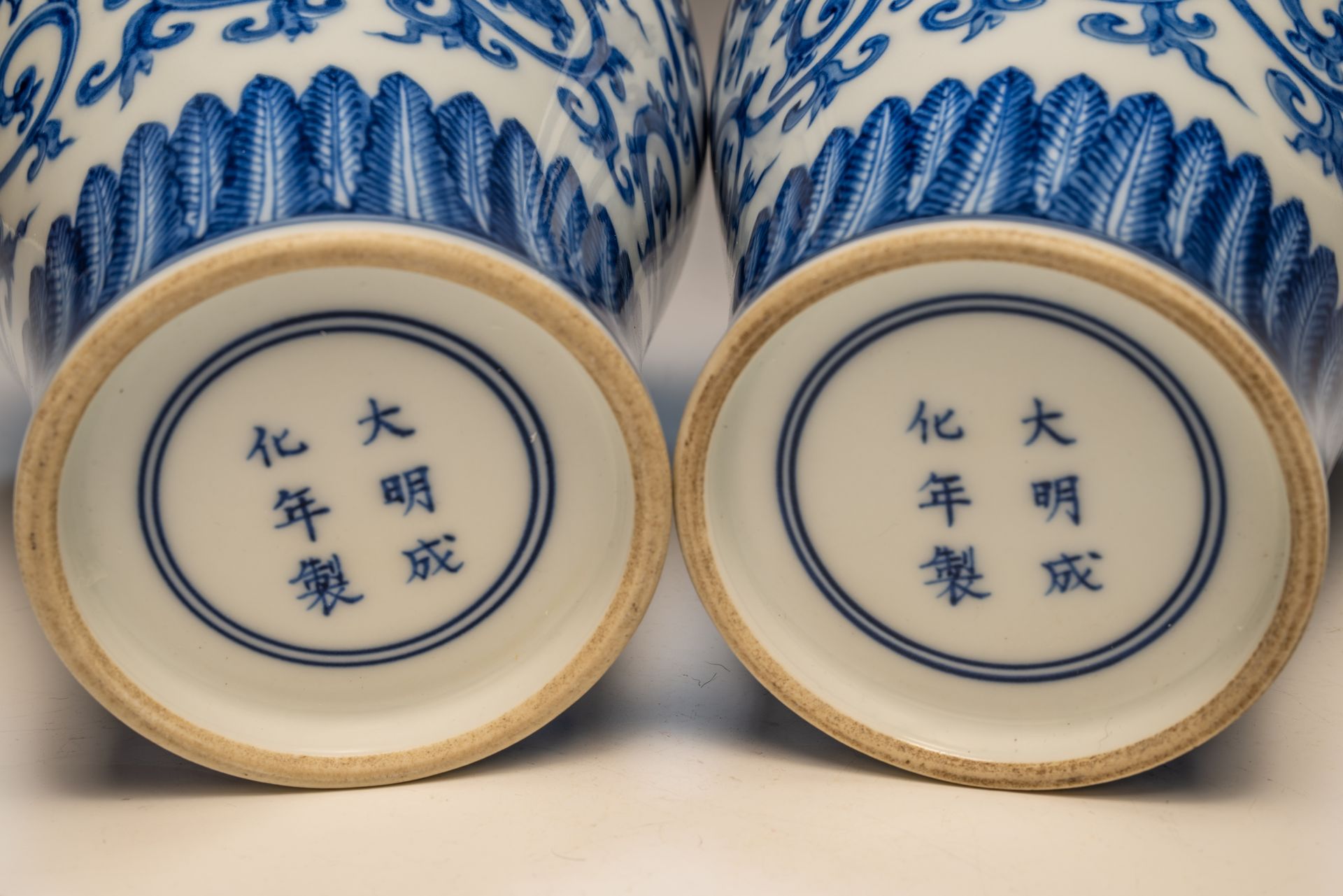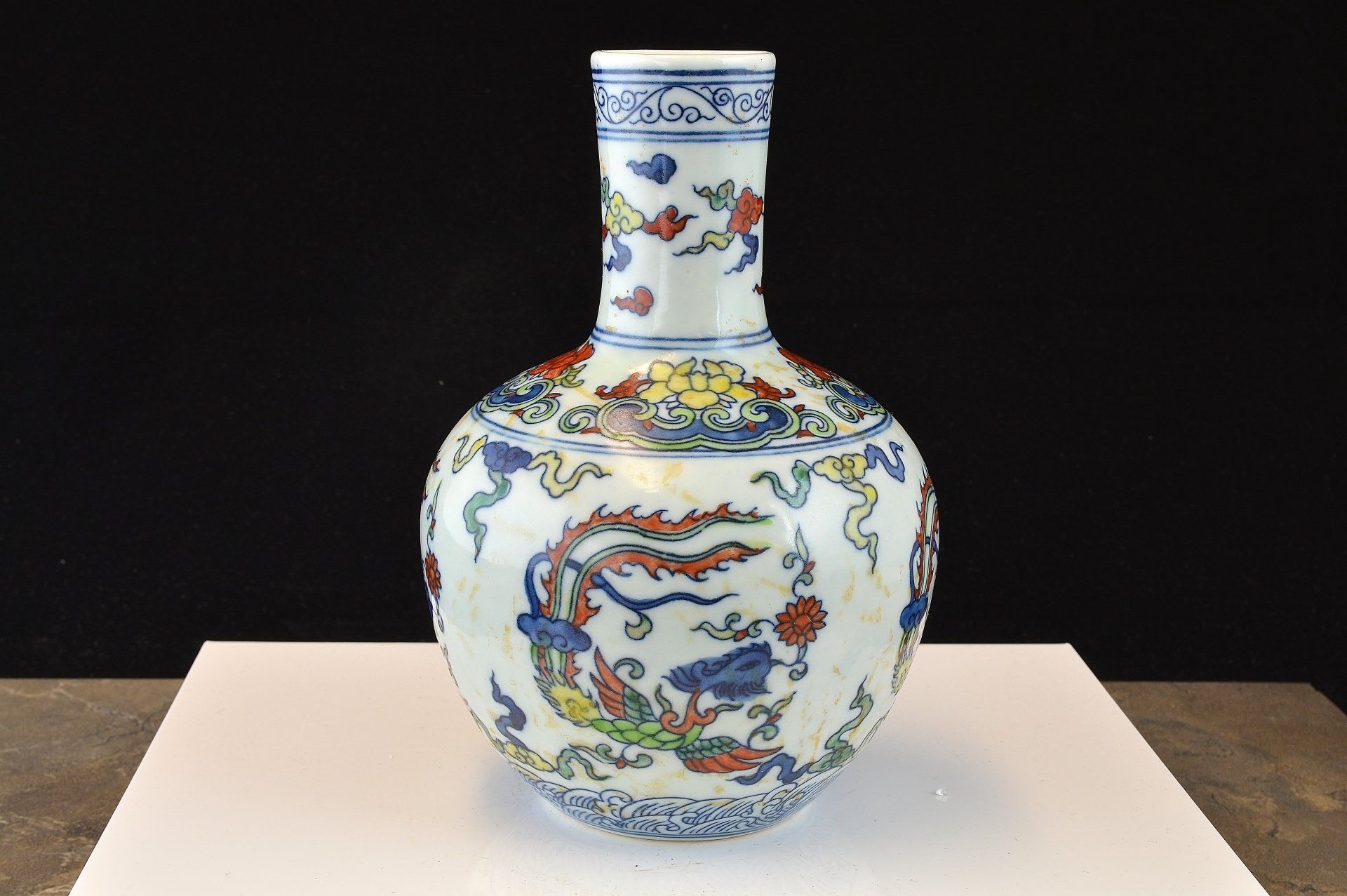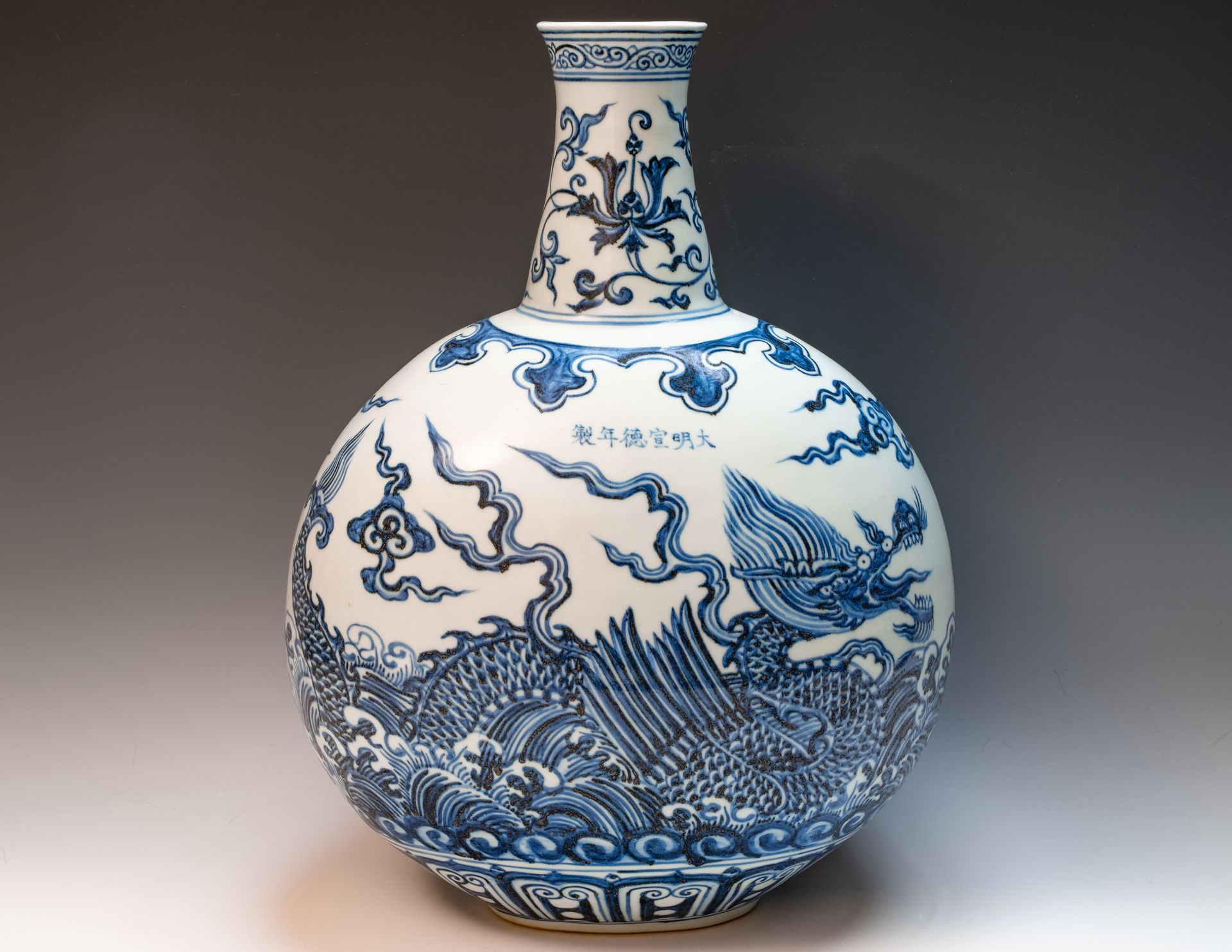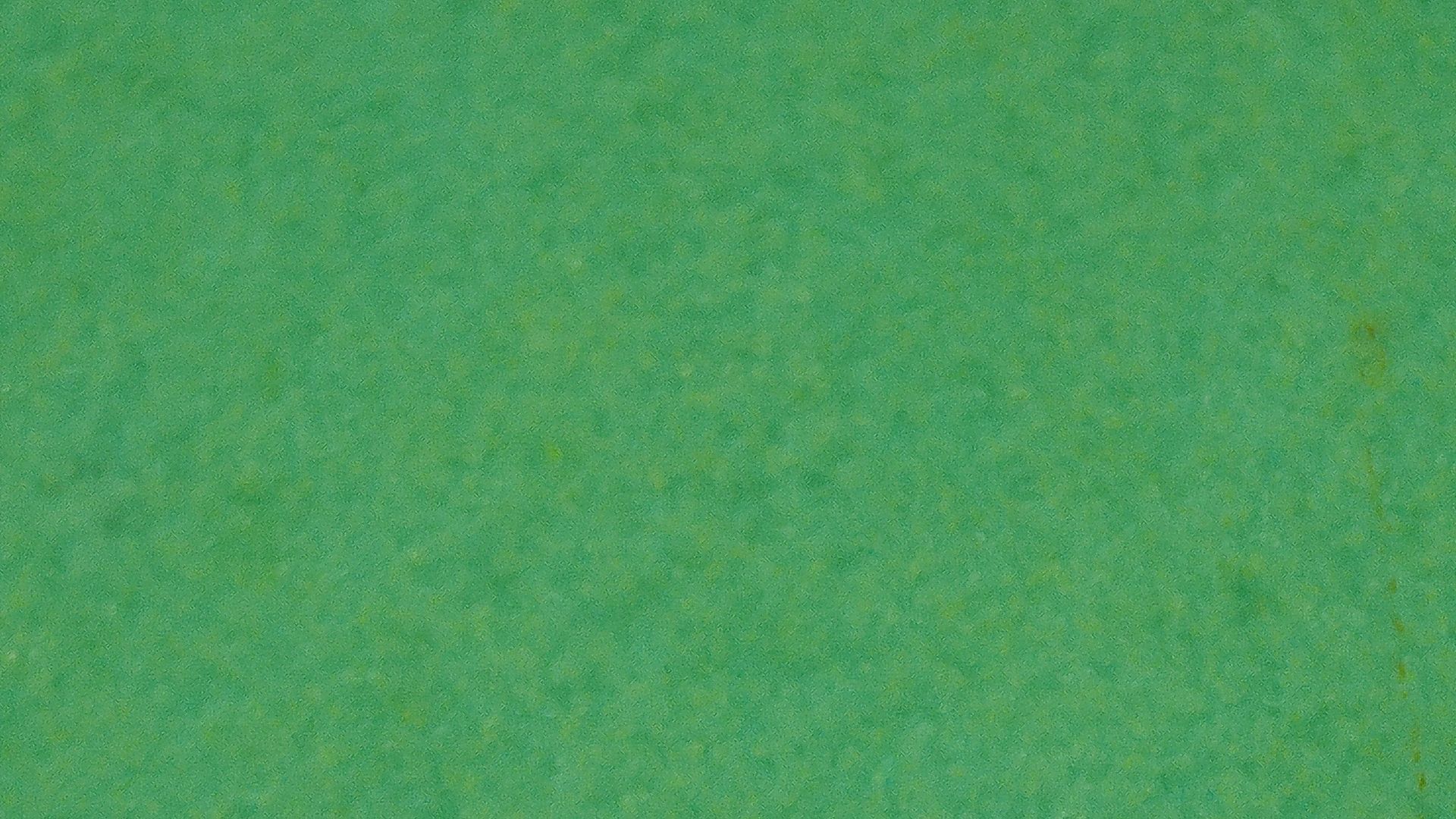中国名作
精美重要的明代御用瓷器
如果您有兴趣购买本网站上的任何商品,或者
如有任何疑问,请联系我们。
代理人:Venizelos G. Gavrilakis,VENIS STUDIOS 总裁
Venizelos@chinesemasterpieces.com电话: 971 50 683 5877
明代十五世纪成化款青花双葫芦百合花纹精美瓷瓶
这件非凡的藏品是一件成化时期(1465年至1487年)的青花双葫芦百合花瓶。它以深邃的钴蓝色颜料绘制而成,瓶身七瓣,饰以垂瓣、缠枝百合和叶片,精美绝伦。瓶高约9又3/8英寸。对于收藏家和鉴赏家而言,由于类似的成化双葫芦花瓶极为罕见,建议查阅拍卖图录、学术著作和博物馆藏品。这件花瓶造型优美,深邃的蓝色调令人惊艳,瓶身上精湛的自由奔放的笔触更凸显了成化瓷器卓越的艺术风格。这一时期的工匠以其精细的轮廓描绘和奔放的笔触而闻名。这一时期生产的青花瓷器是中国瓷器中最受追捧的珍品之一。这件瓷器的显著特征在于其独特的钴蓝颜料,这种颜料呈现出一种独特的黑色调,源自进口钴蓝,据信是来自波斯的萨马利蓝。值得一提的是,这种特殊的钴蓝已经超过五个世纪没有进口了,这更凸显了此类瓷器的稀有性。此外,当时还使用了当地一种名为皮塘的钴蓝,这些颜料的混合运用造就了丰富而精致的色调。这一时期陶土的精湛工艺和高温窑炉的使用,也造就了瓷器独特的特征,例如大型器皿底部未施釉的部分偶尔会出现烧痕或斑驳的纹路。施釉后,某些器皿的底部会呈现出波浪状的轮廓,尤其是在光照下更为明显。这种特殊的釉料品质卓越,其特征是细小均匀的气泡,用放大镜可以清晰地观察到,这进一步证明了其真实性和年代久远。瓷坯中出现的剥落痕迹表明了这件花瓶的历史意义,它展现了成化青花瓷的巅峰之作,这一类别在艺术性和品质上都无与伦比。
(点击图片放大)
请联系我获取价格信息。
明代十五世纪成化青花风行款人物罐
这件精美的青花官罐堪称明代御制青花瓷罐的典范之作,具体可追溯至十五世纪,并带有成化年间(1465-1487)的款识。罐身共有四幅纹饰:第一幅描绘荷叶;第二幅描绘骏马驰骋云间的水景;主纹饰描绘叙事场景,并镌刻六字成化款识;罐底亦饰以水纹。人物刻画生动传神,尤其是飘逸的衣袍,更显其精湛的工艺。此外,罐身可见的粘合痕迹也印证了其最初的组装方式。罐底呈现出斑驳的纹理,表明其在烧制过程中曾受烧灼。此罐高约11 3/4英寸。成化青花瓷以其独特的钴蓝色颜料而闻名,被誉为中国最受推崇的瓷器之一。成化瓷器所用的钴蓝以其独特的黑色色调而著称,这种蓝色源自进口的索马里蓝钴,并与当地产的名为皮塘的钴蓝混合,以增强其稳定性,最大限度地减少褪色风险。与前代瓷器不同,成化瓷器由于钴蓝的精细提炼,通常避免了堆砌和堆积现象。这种钴蓝历史上产自波斯,自成化时期结束以来,已有五个多世纪未再进口到中国。成化瓷器以其精细的轮廓和奔放的笔触而著称,展现出一种自然流畅的风格。其陶土成分优于前代瓷器,高温窑的使用使得瓷器尺寸较大,底部常呈现烧制或斑驳的无釉效果,而施釉的底部则可能呈现出波纹状。仔细观察,釉面均匀,在放大镜下可见细小的气泡。这件作品的饼干主体也出现了剥落的迹象,进一步证实了它的年代和真伪。
(点击图片放大)
请联系我获取价格信息。
明代十五世纪名贵青花梅瓶故事瓶,成化款
这件精美绝伦的成化时期青花梅瓶,为明代(1465年至1487年间)款识,高约35厘米(13 3/4英寸)。对于收藏家和鉴赏家而言,建议参考拍卖图录、学术著作和博物馆藏品,因为类似的成化梅瓶在其他地方的出版物或展览中极为罕见。此瓶造型优美,色彩鲜艳,饰以精湛的自由笔触,展现了成化瓷器上乘作品的典型特征。成化时期的青花瓷是中国瓷器中最受追捧的珍品之一。其独特的钴蓝颜料是一大特色,呈现出一种源自进口钴蓝的独特黑色调,据信是来自波斯的萨马利蓝。这种特殊的钴蓝已经超过五个世纪没有进口,更凸显了此类瓷器的稀有性。此外,当地还使用了一种名为皮塘的钴蓝颜料,两种颜料的结合产生了丰富而精致的色调。成化瓷器工匠以其精细的轮廓勾勒和粗犷的笔触填充而著称。这一时期陶土的精制和高温窑炉的使用,造就了成化瓷器独特的特征,例如在较大器皿的未施釉底部偶尔可见烧痕或斑驳的纹路。施釉后,部分器皿底部在光照下会呈现出波纹状。这件瓷器的釉面尤为精细,使用放大镜可以观察到细小均匀的气泡,进一步证实了其真实性和年代。素烧坯体中的剥落痕迹也凸显了这件瓷器的历史价值。它是成化青花瓷巅峰之作的见证,其艺术性和品质堪称无与伦比。
(点击图片放大)
请联系我获取价格信息。
明代十五世纪成化款青花瓷罐
T这件精美的藏品,名为“明代成化款青花瓷狮子罐”,堪称成化时期(1465-1487年)艺术的典范。此罐高约5又1/8英寸,是备受推崇的成化瓷器的典型代表。其精湛的工艺展现了非凡的技艺和精准度,唯有亲眼鉴赏才能真正领略明代工匠的艺术造诣。查阅拍卖图录、学术著作和博物馆藏品,您很难在市场上找到与之媲美的成化瓷罐。此罐造型优美,色彩鲜艳,饰以精妙的自由笔触,笔法看似极简,实则精雕细琢。这种对细节的极致追求正是成化瓷器品质的体现。罐身饰有四尊佛狮和各种佛教符号。用珠宝放大镜观察,可以发现素坯有明显的剥落,这表明这件陶罐年代久远。在中国陶瓷中,成化时期的青花瓷最为珍贵,其标志性的钴蓝色调尤为引人注目。成化时期使用的钴蓝带有独特的黑色调,源自进口的萨马利蓝钴蓝,据信产自波斯,但具体来源尚不明确,且已超过五个世纪未再进口。此外,当地还使用一种名为皮塘的钴蓝。这两种钴蓝的混合运用,造就了成化瓷器精致的色彩,也正是这种色彩构成其美学特征的关键所在。这一时期的工匠技艺精湛,以细腻的线条勾勒轮廓,再以宽阔的笔触填充,展现出独特的构图手法。陶土的精炼和高温窑烧制常常造就一些独特的审美特征,例如大型器皿底部的斑驳纹理,或在反射光下可见的波纹状釉面。这种釉面质地细腻,且在放大镜下可见细小均匀的气泡,因此极易辨认。总之,真正的成化青花瓷代表了明代陶瓷艺术的巅峰,而这件罐子正是这一辉煌历史的见证。
(点击图片放大)
请联系我获取价格信息。
明代十五世纪成化青花瓷瓶一对,款识及年代。
这对精美的明代青花梅瓶,成化年间(1465-1487年)制作,堪称皇家工艺的巅峰之作。瓶身造型优雅,色彩艳丽,饰以精细的笔触,展现了成化瓷器精湛工艺的典型特征。仔细观察,在放大镜下可见胎体内部的剥落痕迹,表明其年代久远。这对青花瓷器因其珍贵性而闻名,是中国历史上最令人梦寐以求的藏品之一。成化时期特有的钴蓝色调使这对瓷器脱颖而出,呈现出一种独特的黑色,源自进口的萨马利蓝钴蓝。萨马利蓝钴蓝据信产自波斯,但其确切来源尚不确定。这种钴蓝已超过五个世纪未曾使用。此外,成化时期还使用了一种名为皮塘的本地钴蓝颜料。进口钴蓝颜料易褪色,促使工匠们将其与当地颜料混合,以求色彩稳定,最终形成了精致的色彩体系。成化瓷器以其细腻的轮廓和奔放的笔触而著称,这种技法体现了艺术表现形式的演变。这一时期陶土的精细化程度超越了以往,高温窑烧制使得许多器皿的底部(未施釉)呈现出烧痕或斑驳的质感。而底部施釉的器皿则呈现出波纹状的纹理,在光照下尤为明显。这些瓷瓶的釉面尤其值得称道,其釉质细腻,气泡均匀,在放大镜下清晰可见。值得注意的是,真正的青花成化瓷器代表了这一辉煌传统的巅峰之作。这件梅瓶高7.5英寸。
(点击图片放大)
请联系我获取价格信息。
一件精美的成化时期宫廷碗,带有明代款识。
以秋葵植物为主题
**成化宫廷瓷碗,品相极佳** 这只精美的成化宫廷瓷碗采用极为珍贵的三昧蓝钴釉,这种颜料因其独特的色泽而区别于当时的中国钴釉,其历史可追溯至元代和明代早期。成化瓷器的工艺精湛,工匠们巧妙地提炼钴釉,避免了常见的堆积和堆积现象,从而保证了釉面的美观。此外,他们还将进口钴釉与本地皮塘钴釉混合,创造出丰富而精致的色调。值得注意的是,成化瓷器中使用的进口钴釉已停产五个多世纪,因此现代仿制品已无可能。资深的收藏家需要具备敏锐的鉴赏力才能准确鉴别此类瓷器。成化瓷器工匠对进口钴釉的精湛提炼,造就了色彩斑斓、美轮美奂的瓷器,与其他时期的瓷器相比,极具辨识度。这只瓷碗的素烧部分有剥落现象,印证了其年代久远。这款碗目前有售,直径约为5 5/8英寸。如果您对这款精美的碗有任何疑问,请随时联系我们。ppjrs
(点击图片放大)
请联系我获取价格信息。
明代成化款青花瓷狮子天罐一对,品相极佳。
这件精美的明代成化款青花瓷狮子天罐,罐身饰以佛教纹饰,狮子与丝带和圆球交相辉映,充分展现了成化时期(1465-1487年)瓷器卓越的艺术造诣。罐高约5又1/4英寸,底部刻有“天”款,象征“天”。其精湛的工艺体现了明代瓷器特有的超凡技艺和精准度。查阅拍卖图录、学术文献和博物馆藏品可知,市面上可找到的同类成化瓷罐极为罕见。这些瓷罐造型精巧,色彩鲜艳,笔触自由奔放,展现出非凡的艺术水准。如此精益求精的细节处理,正是成化瓷器品质的标志。使用珠宝放大镜进一步观察,可以发现素坯中存在明显的剥落,这证明了这件陶罐的年代久远。在中国陶瓷领域,这一时期的青花瓷备受推崇,其标志性的钴蓝色调尤为引人注目,而这种钴蓝色调正是成化瓷器的特征。成化时期使用的钴蓝以其独特的黑褐色调而闻名,这种钴蓝源自进口的萨马利蓝钴,据信产自波斯。然而,由于这种钴蓝已经五个多世纪没有进口,其确切来源尚不确定。当地一种被称为“皮塘”的钴蓝也被使用;工匠们将其提炼得非常精细,以至于在精美的成化瓷器上很少出现过度堆砌的情况。这两种钴蓝的融合造就了精致的色彩,充分展现了成化瓷器的美学价值。这一时期的工匠们擅长用粗犷的笔触勾勒轮廓,展现出独特的构图手法。这种釉面极易辨认,因为它品质卓越,而且在放大镜下可以看到细小均匀的气泡。总之,真正的成化青花瓷代表了明代陶瓷艺术的巅峰,而这些罐子正是这一辉煌历史的见证。
(点击图片放大)
请联系我获取价格信息。
一件精美的明代成化款宫碗
以牡丹花为主题
**成化宫廷精美碗,款识精良,极具时代意义** 此碗纹饰繁复,以石纹、牡丹花纹和花卉纹样为特色。值得一提的是,元代至明初使用的三昧蓝钴釉色泽独特,与同时代中国钴釉截然不同。成化瓷器在钴釉加工方面技艺精湛,避免了常见的堆釉现象,从而保证了釉面的美观。此外,工匠巧妙地将进口钴釉与本地皮塘钴釉融合,呈现出丰富而精致的色彩。需要强调的是,成化时期使用的进口钴釉已超过五个世纪未曾出现在市场上,因此其品质无可比拟。收藏家必须具备敏锐的鉴赏力才能领略其精妙之处。成化时期进口钴釉的精湛工艺赋予瓷器丰富的色调,使其与其他时期的瓷器截然不同。这个碗的饼干层出现了剥落,这进一步证明了它的年代和真品身份。这件精美的器物直径为5 3/4英寸,目前正在出售。如有任何关于这件精美碗的疑问,请随时与我联系。ppjrs
(点击图片放大)
请联系我获取价格信息。
明代成化款斗彩梅平双凤瓶
这件精美的中国古代斗彩梅瓶,饰以双凤纹,是其时代艺术与工艺的杰出代表。“斗彩”一词指的是其创作中运用的鲜明色彩对比,其特点是釉下青花勾勒轮廓,并以鲜艳的珐琅彩填充,巧妙地排列组合,既灵动又和谐。瓶身饰以精巧的纹饰带,描绘了成对的凤凰穿梭于牡丹和色彩斑斓的枝叶之间,颈部和底部亦是如此。此瓶的釉下青花源自进口的珍贵钴蓝——萨马里蓝,并与本地的皮塘钴精心调配而成。这种独特的组合造就了成化年间钴蓝的卓越声誉,其品质在中国历史上首屈一指,至今仍与其他朝代使用的钴蓝颜料有着显著的区别。值得注意的是,萨马利蓝釉已超过五个世纪未曾进口,其源自波斯的来源至今仍是众说纷纭。明代后期,特别是成化窑出产的顶级斗彩瓷器,其陶土呈现出一种微妙的灰白色,宛如骨色。这一特征在这件花瓶上尤为明显,同时瓶身还呈现出略带褐色的紫色——这是成化时期斗彩瓷器的典型特征。值得注意的是,花瓶素坯有剥落现象,进一步印证了其年代久远。瓶底有六字“成化年款”,以双圈纹饰环绕,外圈饰以紫色纹饰。成化时期被公认为是斗彩技艺的巅峰时期,这件花瓶卓越的品质和精湛的工艺使其在斗彩瓷器中独树一帜。这件明代成化时期凤凰梅瓶高约14.5英寸,气势恢宏。 ppjrs
(点击图片放大)
请联系我获取价格信息。
十五世纪明代成化款与帝制斗彩
瓷质凤凰天罐
这件精美的斗彩天罐,明代成化年间制作,是一件难得的古董,罐身绘有凤凰飞翔于牡丹与卷草纹之间。“斗彩”一词指的是一种运用对比色彩的技法,其特点是釉下青花勾勒轮廓,并以和谐的彩釉加以衬托,体现了成化工匠的奇思妙想。这一时期的工匠以其对色彩和技法的创新运用而闻名。值得一提的是,此罐所用的釉下青花源自进口的萨马利蓝,并与本地的皮塘钴混合而成。这种混合造就了一种格外精致的钴蓝色,与其他中国陶瓷常用的钴蓝色截然不同。萨马利蓝已停止进口五个多世纪,其确切的产地——波斯——至今仍是个谜。这件陶罐采用高温烧制,因此圈足常呈褐色,罐底略微起伏,在不同的光线下会呈现出不同的纹理。此外,素烧坯体上的剥落痕迹也增添了陶罐的真实性和年代感。罐底有“天”款。成化时期被广泛认为是中国陶瓷斗彩技法的巅峰时期。这件明代成化时期天罐,罐身饰有雄伟的凤凰纹,高约5 3/8英寸。
(点击图片放大)
请联系我获取价格信息。
明代成化御用斗彩瓷天罐,有“冬三友”款及年代
这件精美的斗彩天罐,以其精湛的工艺而闻名,堪称明代成化时期工艺的典范。“斗彩”一词,意指“色彩对比”,指的是其制作技法——先以釉下青花勾勒轮廓,再以色彩斑斓的珐琅彩精心填充。这种和谐的技法造就了引人入胜、充满奇思妙想的视觉美感。罐身饰以“冬三友”图案,包括松、竹、梅枝。值得一提的是,此罐所用的釉下青花源自进口的萨马里蓝钴蓝。这种高品质的钴蓝与本地的皮塘钴蓝混合,调配出一种精致的色调,被誉为中国历史上最美丽的钴蓝之一。这种独特的色调是成化时期的典型特征,使其在中国其他钴蓝中脱颖而出。值得注意的是,萨马利蓝的进口已超过500年,其在波斯的起源至今仍不确定。成化窑顶级斗彩瓷器所用的陶土呈淡白色,近看之下,宛如骨色。此外,窑炉高温烧制常导致器底出现褐色圈纹,在特定光照条件下,器底可能呈现细微的波纹。器底刻有成化款识,意为“天”,更添其意义。这件天罐是成化时期斗彩技艺巅峰的代表,彰显了其卓越的品质和精湛的设计。此罐高约5 1/8英寸,素烧胎面有剥落痕迹,印证了其年代久远和真实性。这件天罐堪称明代一件非凡的文物。
(点击图片放大)
请联系我获取价格信息。
明代成化款斗彩瓷器:十五世纪成化款天罐,饰以神话生物
这件精美的明代斗彩天罐,归于成化款,罐身绘有神兽在水面之上云间翩翩飞舞的图案。“斗彩”指的是运用对比色的艺术技法。此罐以釉下青花勾勒轮廓,再以彩釉细致填充,最终呈现出和谐优美的画面,展现了成化工匠天马行空的风格。成化时期,工匠们尝试运用各种色彩和技法,取得了卓越的成就。值得一提的是,此罐的釉下青花由进口的萨马利蓝和本地产的皮塘蓝混合而成。这种独特的配比造就了中国历史上最精致的钴蓝,使其与中国陶瓷生产中常用的其他钴蓝截然不同。需要注意的是,萨马利蓝的进口在500多年前就已停止,其产地波斯至今仍无定论。这件陶罐展现出高温烧制的痕迹,其圈足常呈现独特的褐色;在特定光照条件下,罐底的色泽也会有所变化。此外,素烧坯体上的剥落也表明此罐年代久远。罐底刻有“天”字,象征“天”。成化时期被认为是斗彩技艺的巅峰时期,这件明成化时期天罐高约5英寸,体现了当时精湛的工艺和高超的技艺。
(点击图片放大)
请联系我获取价格信息。
十五世纪明代成化时期斗彩瓷凤凰瓶
这件精美的中国古代斗彩凤瓶,可追溯至成化早期,堪称明代艺术精湛技艺的典范。“斗彩”一词指的是运用对比鲜明的色彩,以釉下青花勾勒轮廓,辅以精心施绘的彩色珐琅,最终呈现出和谐而灵动的视觉效果。此瓶制作于成化早期,体现了成化工匠在色彩和技法上的探索精神。这一时期使用的陶土明显偏白,釉面也呈现出独特的蓝色调。瓶身纤薄,展现了当时精湛的工艺。瓶底青花采用进口的萨马里蓝钴蓝,并巧妙地与产自皮塘的本地钴蓝混合而成。这种组合造就了一种精致的钴蓝,在中国陶瓷史上独树一帜,与其他中国常用的钴蓝颜料截然不同。值得注意的是,萨马利蓝瓷已超过五个世纪未曾进口,其在波斯的确切产地至今仍不确定。此瓶展现出高温窑烧的特征,包括圈足呈棕褐色,瓶底略微起伏(在不同光线下均可见),以及素烧坯体有剥落的痕迹,所有这些都证明了其年代久远和真实性。瓶底的六字款识进一步证实了其成化时期的出处,成化时期被誉为斗彩技艺的巅峰时期。这件精美的明代瓷瓶高约6.5英寸。
(点击图片放大)
请联系我获取价格信息。
明代成化款斗彩梅瓶龙纹
这件精美的中国古代斗彩三龙梅瓶,堪称当时艺术造诣和工艺水平的典范。“斗彩”一词源于其创作中运用的对比鲜明的色彩,以釉下青花勾勒轮廓,再以鲜艳的珐琅彩填充,整体风格既灵动又和谐。这件花瓶尺寸硕大,且艺术家在色彩对比方面展现了近乎完美的精湛技艺,更凸显了其重要性。瓶身饰有精巧的纹饰,分别描绘了凤凰、龙和飞马。值得一提的是,此件花瓶所用的釉下青花源自著名的进口钴蓝——萨马里蓝,并与本地的皮塘钴精心调配而成。这种独特的组合,使得成化年间的钴蓝釉色泽艳丽,在历代钴蓝釉中独树一帜,与其他朝代使用的钴蓝釉色截然不同。值得注意的是,萨马利蓝釉已有500多年未曾进口,其在波斯的起源至今仍不确定。成化窑出产的顶级斗彩瓷器所用的陶土呈略带灰白的色调,宛如骨色。这一特征在这件梅瓶上清晰可见,瓶身还带有典型的烧制痕迹,例如圈足和环部的褐色调,以及素烧胎面的剥落,这些都印证了其年代久远。瓶肩处饰有成化时期的六字款识,成化时期被公认为是斗彩技艺的巅峰时期。这件梅瓶的品质和工艺使其卓尔不群。有人认为成化时期没有生产大型斗彩瓷器,但这件梅瓶恰恰驳斥了这种说法。这件明代成化时期龙纹梅瓶高约19英寸,气势恢宏。
(点击图片放大)
请联系我获取价格信息。
明代成化时期(15世纪)一件重要的青花瓷瓶,因其尺寸和款识而引人注目。
这件精美的明代青花瓷瓶,底部有成化款识,是任何名家收藏的珍品。此瓶尺寸宽大,纹饰繁复,尤其引人注目的是瓶身中央饰带,描绘了鱼儿穿梭于水草间的景象。成化时期(1465年至1487年)的大型瓷瓶极为罕见,而这件瓷瓶更是以其尺寸和艺术价值脱颖而出。瓶身第二道饰带内有醒目的六字成化款识。查阅拍卖目录、学术著作和博物馆藏品可知,成化时期大型瓷瓶的公开记录极为稀少,更凸显了其非凡的地位。此瓶的艺术特色在于其优美的造型、鲜艳的色彩以及精湛的绘画技法,笔触流畅而又控制得当——这正是成化瓷器上乘之作的标志。在中国瓷器中,成化时期的青花瓷备受推崇。这一时期瓷器独特的钴蓝颜料使其色泽深沉,近乎黑色,极具辨识度,这得益于当时进口的钴蓝。这种被称为索马里蓝的钴蓝——据推测产自波斯——已经五个多世纪没有再进口了。值得一提的是,成化时期还使用了当地特有的钴蓝——皮塘蓝。工匠们巧妙地将这些钴蓝混合使用,以稳定颜料,从而呈现出更加精致的色调。成化瓷器的细节刻画也十分精湛,以细腻的线条勾勒轮廓,并以宽阔的笔触填充,凸显了其艺术上的高超技艺。成化瓷器的陶土成分优于以往时期,先进的高温烧制技术也使得瓷器底部呈现出独特的烧痕或斑驳纹理。釉面质地细腻,并可见细小均匀的气泡,在放大镜下清晰可见,这些气泡也极具辨识度。这件花瓶堪称成化青花瓷的典范之作,高约 26 英寸。
(点击图片放大)
请联系我获取价格信息。
明代十五世纪成化青花瓷大人物罐
这件精美绝伦、尺寸可观的青花人物罐,属于成化年间御款,工艺精湛。罐身饰以繁复的纹饰,包括多道纹带,其中主纹带描绘了一幅叙事场景。此罐尺寸在成化瓷器中尤为突出,实属罕见,值得业内专家赏识。成化年间为1465年至1487年,罐身第二道纹带上镌刻有六字“成化”款识。查阅拍卖图录、学术著作及博物馆藏品,可知如此尺寸的青花罐在已出版的记录中尚属首例。此罐造型优雅,色彩鲜艳,笔触自由奔放,是成化瓷器上乘之作的典型特征。此类青花瓷器在中国装饰艺术史上享有极高的声誉。这一时期使用的钴颜料色泽浓郁,呈现出独特的黑色调,这种钴源自进口钴,据信产自波斯,但具体产地至今不明。值得注意的是,这种钴在五百多年间都没有进口过。成化时期,工匠们也使用一种名为皮塘的本地钴。由于进口钴容易流淌,工匠们对混合物进行了稳定处理,以获得更细腻的色彩变化。成化瓷器以其精细的轮廓和宽阔的笔触而著称,展现了精湛的装饰技艺。这一时期陶土的精炼技术超越了以往任何时期,高温窑烧制常常使瓷器呈现出微妙的斑驳纹理,正如这件花瓶底部所见,其素烧部分也出现了剥落现象——这正是其年代久远的佐证。这件罐子的釉面尤为出色,极其细腻,用放大镜仔细观察,可以看到细小均匀的气泡。真正的成化青花瓷代表了中国瓷器艺术的巅峰。这件精美的罐子高约26英寸。
(点击图片放大)
请联系我获取价格信息。
明代成化款青花百合田纹罐一对,品相上佳。
这件被誉为明代成化款青花瓷“天”罐的精美器物,是成化时期(1465-1487年)卓越艺术成就的杰出代表。罐高约4又3/4英寸,底部刻有“天”字款,意为“天”。其精湛的工艺展现了明代瓷器工艺的超凡技艺和精准度。查阅拍卖目录、学术文献和博物馆藏品可知,市面上可找到与之媲美的成化款青花瓷罐。这些青花瓷罐造型优美,色彩艳丽,笔触自由奔放,展现出精湛的技艺。如此一丝不苟的细节处理,正是成化瓷器品质的体现。使用珠宝放大镜仔细观察,可见瓷坯有轻微剥落,进一步印证了这些器物的年代久远。在中国陶瓷领域,成化时期的青花瓷备受追捧,其最显著的特征是令人惊艳的钴蓝色调。成化时期使用的钴蓝以其独特的黑褐色调而闻名,这种色调源自进口的萨马利蓝钴蓝,据信其产自波斯,但由于五百多年来进口中断,其确切来源尚不确定。当地一种名为皮塘的钴蓝也被使用;工匠们对其进行了精细的提炼,以至于在成化瓷器上出现过量的皮塘极为罕见。这两种钴蓝的结合,造就了精致的色彩,充分展现了成化瓷器的美学价值。这一时期的工匠们技艺精湛,以粗犷的笔触勾勒出纤细的轮廓,展现出独特的构图方法。这些瓷器的釉面质感极佳,在放大镜下可以观察到细小均匀的气泡,因此很容易辨认。总之,正宗的成化青花瓷器代表了明代陶瓷艺术的巅峰,这些罐子则是这一辉煌传统的永恒见证。
(点击图片放大)
请联系我获取价格信息。
明代成化款青花凤凰天罐,值得关注。
这件名为“明代成化款凤凰天罐”的青花瓷器,是成化时期(1465-1487年)艺术造诣的杰出代表。此罐高约5又1/8英寸,底部刻有“天”字款识。罐身工艺精湛,展现了明代瓷器高超的技艺和精准度。查阅拍卖目录、学术文献和博物馆藏品可知,市面上可找到的成化天罐极为罕见。此罐造型优美,色彩艳丽,笔触自由奔放,更显匠心独运。如此精益求精的细节处理,正是成化瓷器品质的体现。使用珠宝放大镜仔细观察,可见素烧胎面有轻微剥落,表明此罐年代久远。在中国陶瓷领域,成化时期的青花瓷备受推崇,其显著特征是醒目的钴蓝色调。成化时期使用的钴蓝以其独特的黑褐色调而闻名,这种钴蓝源自进口的萨马利蓝钴,据信产自波斯,但由于其在长达五个多世纪的进口中消失,确切来源尚不确定。此外,当地还使用一种名为皮塘的钴蓝;工匠们将其提炼得非常精细,以至于在成化瓷器上很少见到堆积堆积的痕迹。这两种钴蓝的巧妙运用,造就了精致的色彩,充分展现了成化瓷器的美学价值。这一时期的工匠技艺精湛,以粗犷的笔触勾勒出纤细的轮廓,展现出独特的构图手法。这些瓷器的釉面质感极佳,在放大镜下可以观察到细小均匀的气泡,因此很容易辨认。总之,正宗的成化青花瓷代表了明代陶瓷艺术的巅峰,这些罐子是这一辉煌传统的永恒见证。
(点击图片放大)
请联系我获取价格信息。
成化时期青花笔洗
十五世纪明朝
这件精美的明代成化时期黑白雕花笔洗,堪称当时艺术造诣和工艺水平的典范。笔洗上绘有波光粼粼的图案,水面之上栩栩如生地描绘着神话生物,展现了高超的技艺。笔洗高约5 9/16英寸,是成化时期(1465年至1487年)的典型代表。成化青花瓷是中国最受推崇的瓷器之一,其特色在于当时使用的钴蓝颜料品质上乘。成化时期的钴蓝颜料色泽浓郁深邃,与其他时期的钴蓝颜料不同,这是因为当时使用了进口的索马里钴蓝,并混合了本地产的碧玺(pitang)以防止颜料晕染——这是当时瓷器生产过程中一个重要的考量因素。成化时期钴料的提炼使得釉面异常光滑,避免了早期瓷器常见的堆积和凹凸不平。当时进口的钴料来自波斯,但具体产地至今仍未确定。自成化时期结束至今已逾五个世纪,中国再未进口过类似的钴料。成化瓷器纹饰轮廓分明,笔触宽阔流畅,展现出一种轻松自在的风格。与以往相比,成化瓷器的陶土更加精细,高温窑烧制使得素烧瓷器的底部常呈现烧焦或斑驳的质感,而施釉瓷器的底部则可能出现波纹状起伏,素烧坯体也存在剥落现象,这些都进一步印证了其年代。仔细观察,可以用放大镜观察到釉层中细小均匀的气泡。素烧坯体中的剥落现象也证明了其历史价值。因此,有人断言,真正的成化青花瓷代表了瓷器工艺的巅峰。
(点击图片放大)
请联系我获取价格信息。
明代宣德款青花瓷器,十五世纪。
以凤凰对峙和花卉图案为特色的菜肴
这件精美的十五世纪明代瓷盘,镌刻有宣德款识及年代,以青花瓷精心绘制,图案包括凤凰、花卉、枝叶和水果。鎏金边饰更添其艺术价值。瓷盘采用进口萨马里蓝钴釉,这种钴釉以其独特的黑褐色调而闻名。釉面独特的堆积效果呈现出深色斑点或银色光泽,这些特征使其与国产中国钴釉的棕色底色截然不同,从而证实了这件瓷盘的历史渊源,因为这种钴釉已超过五个世纪未曾使用。此外,瓷盘素烧层明显的剥落也增添了其历史意义,进一步印证了其年代久远和真实性。这件瓷盘直径约14又1/8英寸,对于收藏家和鉴赏家来说,都是一件相当不错的藏品。
(点击图片放大)
请联系我获取价格信息。















































































































































































































































































































































































































